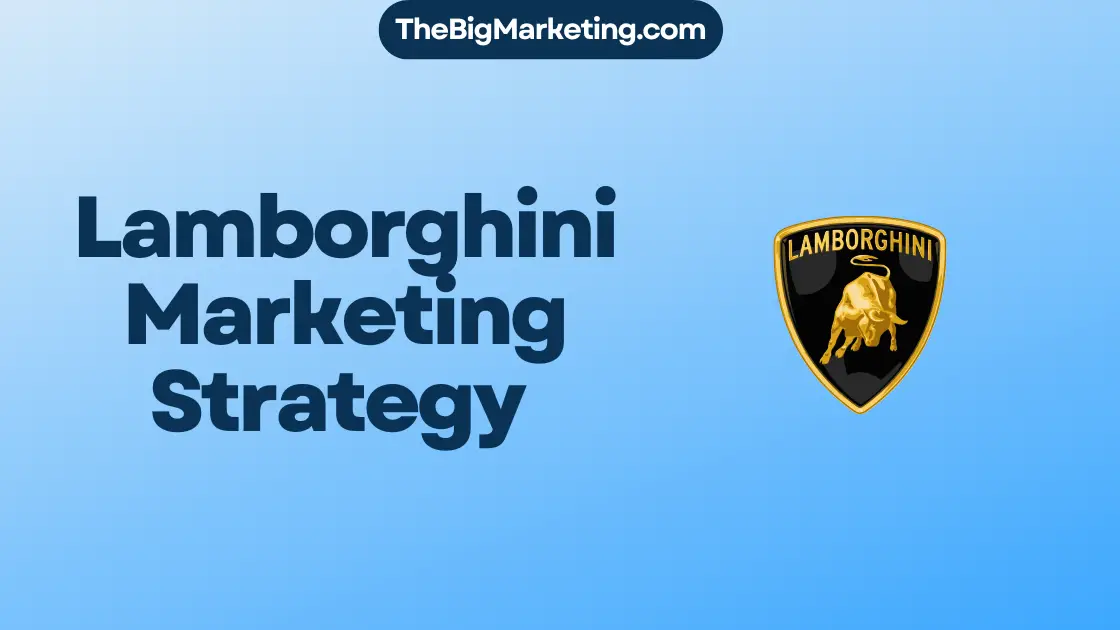Welcome to our in-depth analysis of Stellantis’ marketing strategy for 2024. As a global automotive engineering company formed through the merger of Fiat Chrysler Automobiles and the PSA Group, Stellantis is at the forefront of innovation and transformation in the industry.
In this case study, we will examine Stellantis’ approach to automotive marketing, with a specific focus on digital marketing and brand strategy. We will explore how Stellantis utilizes market segmentation to meet the diverse needs and preferences of its customers, and how the company is investing in software and electrification to become a technology-driven leader in the automotive market.
Join us as we delve into Stellantis’ marketing strategy and discover the key insights that can help propel your own marketing efforts to new heights. Let’s explore the exciting world of Stellantis and its vision for the future.
Key Takeaways:
- Stellantis is a global automotive engineering company formed through the merger of Fiat Chrysler Automobiles and the PSA Group.
- The company utilizes market segmentation, including geographical, demographic, behavioral, and psychographic segmentation, to meet the specific needs of its customers.
- Stellantis is investing in software and electrification to transform into a technology-driven company.
- The company aims to achieve carbon neutrality by 2038 and become a leader in customer satisfaction.
- This case study focuses on Stellantis’ marketing strategy, including digital marketing and brand strategy.
Stellantis’ Formation and Market Segments
Stellantis, a global automotive engineering company, was formed in 2021 through the merger of Fiat Chrysler Automobiles and the PSA Group. This strategic partnership brings together the strengths and expertise of both companies to create a powerhouse in the automotive industry.
Market segmentation is a fundamental aspect of Stellantis’ marketing strategy. The company understands the importance of targeting specific customer segments to better meet their needs and preferences. Stellantis employs various segmentation methods, including geographical, demographic, behavioral, and psychographic segmentation.
Geographical Segmentation
Stellantis recognizes that different regions have unique market dynamics and customer preferences. Therefore, the company strategically sells its products in specific geographic areas to maximize market penetration and tailor its offerings to local demands. This approach enables Stellantis to effectively address regional challenges and opportunities, resulting in increased market share and customer satisfaction.
Demographic Segmentation
Demographic segmentation plays a crucial role in Stellantis’ marketing efforts. The company analyzes various demographic factors, such as age, gender, and occupation, to understand the specific needs and preferences of different customer groups. This information allows Stellantis to develop targeted marketing campaigns and customize its products and services to cater to the diverse demographics of its customer base.
Behavioral Segmentation
By employing behavioral segmentation, Stellantis identifies customers with similar buying habits and preferences. This approach helps the company gain insights into consumer behavior and create more effective marketing strategies. Understanding the motivations and decision-making processes of its target audience allows Stellantis to deliver personalized experiences, driving customer engagement and loyalty.
Psychographic Segmentation
Psychographic segmentation focuses on analyzing customers’ psychological characteristics, values, and lifestyles. Stellantis aims to gain a deep understanding of its customers’ attitudes, interests, and aspirations. By delving into the psychographic aspects of its target audience, Stellantis can develop resonating marketing messages and create products that align with their customers’ unique identities and aspirations.
| Segmentation | Definition | Benefits for Stellantis |
|---|---|---|
| Geographical Segmentation | Dividing the market based on geographic factors such as country, region, or city. | – Tailor marketing efforts to specific regions. – Adapt products to meet local preferences and needs. – Maximize market penetration in each geographic area. |
| Demographic Segmentation | Classifying the market based on demographic factors such as age, gender, occupation, and income. | – Understand the unique needs and preferences of different customer groups. – Develop targeted marketing campaigns. – Customize products and services for specific demographics. |
| Behavioral Segmentation | Segmenting the market based on customers’ buying behaviors, such as attitudes, preferences, and purchase patterns. | – Identify customers with similar buying habits and preferences. – Create more effective marketing strategies. – Drive customer engagement and loyalty. |
| Psychographic Segmentation | Dividing the market based on customers’ psychological characteristics, values, interests, and lifestyle. | – Gain a deep understanding of customers’ attitudes and aspirations. – Develop resonating marketing messages. – Create products that align with customers’ identities and aspirations. |
Stellantis’ Competitive Market Segments
Stellantis, being a global automotive engineering company, understands the importance of market segmentation in effectively reaching customers and gaining a competitive edge. The company employs various segmentation strategies, including geographic, demographic, behavioral, and psychographic segmentation.
Geographic segmentation allows Stellantis to target customers in different regions and gather valuable market insights. By tailoring their marketing efforts to specific areas, Stellantis can be cost-effective and deliver products that cater to the unique needs of each region.
Demographic segmentation plays a crucial role in Stellantis’ marketing strategy as it helps the company target different customer groups based on factors such as age, gender, occupation, and income. By understanding the diverse needs and preferences of these customer segments, Stellantis can develop products and services that meet their specific requirements.
Behavioral segmentation enables Stellantis to identify customers with similar buying behaviors and preferences. By categorizing customers based on their purchasing habits, the company can create targeted marketing campaigns and offer personalized experiences. This approach helps Stellantis nurture customer loyalty and increase conversion rates.
Psychographic segmentation is another essential element of Stellantis’ market segmentation strategy. By understanding customers’ psychological characteristics, values, interests, and motivations, Stellantis can develop tailored marketing strategies that resonate with their target audience. This allows the company to connect with customers on a deeper level and provide products and experiences that align with their desires.
These market segmentation strategies give Stellantis a competitive advantage in the global automotive market. By effectively reaching and engaging their target customers through segmentation, Stellantis can deliver tailored products, experiences, and marketing campaigns that differentiate the company from its competitors.
Overall, Stellantis’ focus on geographic, demographic, behavioral, and psychographic segmentation positions the company as a leader in understanding its customers’ needs and preferences. This comprehensive market segmentation approach allows Stellantis to stay ahead of the competition and continue delivering innovative solutions to a diverse customer base.
Stellantis’ Transformation Plan
In line with its commitment to innovation and sustainability, Stellantis has developed a comprehensive transformation plan that focuses on investing in software and electrification. By embracing these key pillars, the company aims to drive the future of the automotive industry and meet the growing demand for low emission vehicles.
Investing in Software and Electrification
As part of its transformation plan, Stellantis is set to hire 4,500 software engineers, enabling the company to enhance its expertise in software development. This investment will enable Stellantis to harness the power of digital technology and develop cutting-edge solutions to meet the evolving needs of its customers.
In addition to software development, Stellantis is also prioritizing electrification. The company plans to increase the production of low emission vehicles, contributing to a cleaner and more sustainable future. By leveraging advancements in electric vehicle technology, Stellantis aims to offer environmentally-friendly alternatives to traditional combustion engines.
Outsourcing to Enhance Manufacturing Capabilities
To enhance its manufacturing capabilities, Stellantis plans to outsource some software technology. By partnering with technology-focused companies, the company can tap into specialized expertise and leverage external resources to drive innovation. This strategic approach allows Stellantis to optimize its operations and stay at the forefront of software development in the automotive industry.
Embracing Change as a Traditional Company
As a traditional company with a rich automotive heritage, Stellantis recognizes the need to adapt to the changing landscape of the industry. By embracing software development and electrification, Stellantis is proactively positioning itself as a technology-driven organization. This transformation plan allows the company to combine its traditional strengths with cutting-edge technology, paving the way for continued success in the future.
| Innovation | Electrification | Outsourcing | Adaptation |
|---|---|---|---|
| Investing in software development | Increasing production of low emission vehicles | Outsourcing software technology | Embracing change as a traditional company |
| Hiring 4,500 software engineers | Driving a sustainable future | Leveraging external resources | Combining traditional strengths with technology |
Stellantis’ Marketing Segmentation Strategies
Stellantis, as a global automotive engineering company, recognizes the importance of understanding and catering to its diverse customer base. To achieve this, the company implements various marketing segmentation strategies, enabling targeted and personalized marketing efforts. Here’s a breakdown of the key strategies Stellantis employs:
Behavioral Segmentation
Behavioral segmentation plays a vital role in Stellantis’ marketing strategy. By analyzing customers’ buying habits, preferences, and decision-making processes, the company can identify distinct groups with similar behavioral patterns. This allows Stellantis to tailor its marketing efforts and communication channels to effectively engage its target audience. Whether it’s highlighting features that align with specific preferences or emphasizing benefits that resonate with certain buying habits, behavioral segmentation enables Stellantis to make strategic marketing decisions.
Demographic Segmentation
Demographic segmentation is another crucial component of Stellantis’ marketing segmentation strategy. By analyzing demographic factors such as age, gender, occupation, and income level, the company gains insights into the unique needs and preferences of different customer groups. This knowledge helps Stellantis develop products, messaging, and marketing campaigns that specifically cater to each demographic segment. Whether it’s targeting young professionals in urban areas with energy-efficient vehicles or offering family-friendly features for customers with children, demographic segmentation allows Stellantis to create relevant and appealing offerings for specific customer segments.
Psychographic Segmentation
Psychographic segmentation delves into customers’ psychological characteristics, values, beliefs, and motivations. By understanding what drives their target audience on a deeper level, Stellantis can tailor marketing messages that resonate with their customers’ aspirations and desires. Psychographic segmentation helps to create emotional connections, allowing Stellantis to showcase its products as a reflection of customers’ identities and aspirations. Whether it’s emphasizing the sense of adventure for outdoor enthusiasts or highlighting the eco-consciousness of environmentally conscious individuals, psychographic segmentation enables Stellantis to connect with its customers on a personal level.
By implementing various marketing segmentation strategies, Stellantis continuously strives to deliver tailored experiences, build strong customer loyalty, and stay ahead of evolving market trends. This commitment to understanding customers’ behavior, demographics, and psychographics reinforces Stellantis’ position as a leader in the automotive industry.
| Segmentation Strategy | Key Benefits |
|---|---|
| Behavioral Segmentation | – Targeted marketing efforts – Enhanced customer engagement – Improved conversion rates |
| Demographic Segmentation | – Understanding unique customer needs – Relevant product offerings – Effective messaging |
| Psychographic Segmentation | – Emotional connection with customers – Personalized marketing campaigns – Enhanced brand loyalty |
Stellantis’ Vision for the Future
Stellantis has a clear future vision that is driven by its merger partnership and dedication to innovative mobility solutions. The company is committed to achieving carbon neutrality by investing in electrification and reducing its carbon emissions. Stellantis aims to shape the future of the automotive industry by providing sustainable and technologically advanced mobility solutions.
With its merger partnership, Stellantis has the opportunity to leverage the strengths of both Fiat Chrysler Automobiles and the PSA Group. This collaboration allows the company to pool its resources and expertise, fostering innovation and driving groundbreaking developments in the automotive industry.
To realize its vision, Stellantis is actively investing in electrification. By embracing electric vehicles, the company is paving the way for a more sustainable future. Stellantis understands the importance of reducing carbon emissions and minimizing its impact on the environment. The commitment to carbon neutrality aligns with global efforts to combat climate change and build a more sustainable world.
Stellantis is at the forefront of delivering innovative mobility solutions that cater to the changing needs and expectations of consumers. The company aims to provide advanced technological features, seamless connectivity, and enhanced safety measures in its vehicles. By embracing the latest advancements in mobility solutions, Stellantis is positioning itself as a leader in the industry and striving to provide customers with exceptional experiences.
| Benefits of Stellantis’ Vision |
|---|
| 1. Sustainability: Stellantis’ commitment to carbon neutrality contributes to a greener and more sustainable future. |
| 2. Technological Advancements: By embracing innovative mobility solutions, Stellantis aims to provide customers with the latest technological features and enhanced connectivity. |
| 3. Enhanced Safety: Stellantis strives to prioritize safety by implementing advanced safety measures in its vehicles. |
| 4. Improved Customer Experiences: Stellantis aims to deliver exceptional customer experiences by meeting the evolving needs and expectations of consumers. |
Stellantis’ future vision encompasses the merging of its expertise, commitment to sustainability, and dedication to technological advancements. By remaining focused on its vision, Stellantis is poised to shape the automotive industry and provide customers with cutting-edge mobility solutions that are both forward-thinking and environmentally responsible.
Stellantis’ Commitment to Ethical Responsibility
Ethical responsibility lies at the core of Stellantis’ values, as the company endeavors to create a sustainable future for mobility. Stellantis recognizes the importance of corporate social responsibility and takes proactive steps to minimize its environmental impact, support local communities, and generate shared value for all stakeholders.
Driven by a commitment to sustainable mobility, Stellantis aims to develop innovative solutions that address the pressing environmental challenges faced by the automotive industry. By investing in cutting-edge technologies and embracing the principles of circular economy, the company is dedicated to reducing carbon emissions and promoting clean mobility.
Minimizing Environmental Impact
Stellantis understands its ethical responsibility to protect the environment. The company continually explores ways to minimize its environmental footprint throughout its operations. From sustainable manufacturing practices to the development of eco-friendly vehicles, Stellantis is committed to driving positive change in sustainable mobility.
Stellantis envisions a future where sustainable mobility is accessible and affordable for all. By focusing on the development of zero-emission vehicles and investing in renewable energy sources, the company aims to provide customers with environmentally friendly transportation options.
Supporting Local Communities
Stellantis believes in the importance of supporting local communities in which it operates. The company actively engages with community organizations and stakeholders to address social needs and foster positive change. Through initiatives such as job creation, education programs, and philanthropic efforts, Stellantis aims to be a responsible corporate citizen that contributes to the well-being of society.
Creating Shared Value
Stellantis recognizes that sustainable success is achieved through the creation of shared value for all stakeholders. The company strives to generate economic value while considering the social and environmental impacts of its decisions. By establishing strong partnerships and transparent business practices, Stellantis aims to enhance trust and build lasting relationships with its customers, employees, investors, and the wider community.
Through its ethical responsibility initiatives, Stellantis is committed to transforming the automotive industry and positively impacting the world. By placing sustainability and corporate social responsibility at the forefront of its operations, the company strives to create a better future for mobility and contribute to a more sustainable and inclusive society.
Stellantis’ Focus on Technological Innovation
Stellantis is committed to embracing breakthrough ideas and driving technological innovation to provide innovative, clean, safe, and affordable mobility solutions. The company understands the significance of staying at the forefront of technological advancements to meet the ever-changing needs of its customers. By leveraging cutting-edge technologies, Stellantis aims to transform the automotive industry and shape the future of mobility.
Technological innovation plays a crucial role in enhancing the customer experience, improving vehicle performance, and advancing sustainability efforts. Stellantis continuously invests in research and development to introduce groundbreaking features and technologies that redefine mobility. From electric and hybrid vehicles to advanced driver-assistance systems, Stellantis is at the forefront of developing innovative solutions for clean, safe, and affordable transportation.
Stellantis’ focus on clean mobility encompasses the development and integration of environmentally friendly technologies. By prioritizing clean energy and reducing emissions, Stellantis aims to offer sustainable mobility options that minimize the ecological impact of transportation. Through partnerships, research collaborations, and in-house expertise, Stellantis is actively working towards the realization of a greener and more sustainable future.
In addition to clean mobility, Stellantis is dedicated to ensuring safe mobility for its customers. The company invests in advanced safety technologies to enhance occupant protection and mitigate the risks associated with vehicular accidents. From collision avoidance systems to intelligent driver assistance features, Stellantis is committed to delivering vehicles that prioritize the safety and well-being of its customers and other road users.
Furthermore, Stellantis recognizes the importance of affordable mobility and strives to make its innovative technologies accessible to a wide range of consumers. By optimizing manufacturing processes, embracing cost-effective solutions, and leveraging economies of scale, Stellantis aims to offer affordable mobility options without compromising on quality or performance.
In conclusion, Stellantis’ focus on technological innovation allows the company to offer innovative, clean, safe, and affordable mobility solutions. By harnessing breakthrough ideas and staying at the forefront of technological advancements, Stellantis is shaping the future of the automotive industry and driving the transition towards a more sustainable and technologically advanced mobility ecosystem.
Stellantis’ Value Creation Strategy
Stellantis, as a global automotive engineering company, is dedicated to creating exceptional value for all its stakeholders. With an unwavering entrepreneurial mindset, the company strives to drive innovation, maximize shareholder value, and foster sustainable growth in the dynamic automotive industry.
An Entrepreneurial Mindset for Innovation
Entrepreneurship is at the core of Stellantis’ value creation strategy. By encouraging a culture of innovation, the company continuously seeks new opportunities, challenges the status quo, and develops groundbreaking solutions that meet the evolving needs of customers. Stellantis invests in research and development, fostering partnerships with cutting-edge technology companies to stay at the forefront of automotive advancements.
Maximizing Shareholder Value
Stellantis is committed to maximizing shareholder value through strategic decision-making and efficient resource allocation. By continuously improving operational efficiency and streamlining processes, the company ensures profitability and generates returns for its shareholders. Stellantis leverages its industry expertise to identify valuable investment opportunities while managing risks effectively.
Creating Sustainable Growth
With a long-term perspective, Stellantis aims to foster sustainable growth that not only benefits the company but also contributes to the well-being of society and the environment. The company is dedicated to integrating sustainable practices throughout its value chain, from supply chain management to manufacturing processes and product development. Stellantis proactively embraces clean mobility solutions, reducing carbon emissions, and preserving natural resources for future generations.
Through its value creation strategy, Stellantis exemplifies its commitment to driving innovation, maximizing shareholder value, and achieving sustainable growth. With an entrepreneurial mindset and a focus on long-term success, Stellantis continues to shape the future of the automotive industry.
Stellantis’ Financial Outlook
As Stellantis navigates the transition towards electrification, the company remains focused on its financial outlook. With a strategic approach, Stellantis aims to achieve double-digit operating margins and maximize shareholder value. By maintaining a strong financial performance, the company can effectively support its strategic transformations and position itself as a leader in the automotive industry.
Stellantis recognizes the importance of managing the shift towards electrification in a financially sustainable manner. This requires careful resource allocation and investment in areas that will drive profitability and growth. As the demand for electric vehicles continues to rise, Stellantis aims to capture market share and generate substantial revenue while maintaining strong operating margins.
In addition, Stellantis acknowledges the significance of maximizing shareholder value. By delivering strong financial results, the company can provide attractive returns to its shareholders. This commitment to shareholder value drives Stellantis’ decision-making and strategic planning.
Despite the challenges posed by the industry’s transition, Stellantis is optimistic about its financial outlook. By leveraging its resources, expertise, and market position, the company is well-equipped to capitalize on the opportunities presented by electrification and deliver sustainable growth.
In summary, Stellantis is focused on:
- Managing the transition towards electrification
- Achieving double-digit operating margins
- Maximizing shareholder value
Stellantis’ financial outlook reflects its commitment to financial stability and growth as the company embraces the future of the automotive industry.
Stellantis’ Enduring Legacy
With a rich tradition dating back over a century, Stellantis has firmly established itself as a global leader in the automotive industry. The company’s enduring legacy is a testament to its unwavering grit, perseverance, and staying power.
Throughout the years, Stellantis has navigated through various challenges and changes in the market, adapting and thriving in an ever-evolving industry. It is this resilience that has enabled Stellantis to maintain its position at the forefront of automotive innovation.
Stellantis’ tradition encompasses a commitment to quality and excellence that can be traced back to the earliest days of its founding brands. This dedication to craftsmanship and attention to detail continues to drive the company forward, ensuring its vehicles are synonymous with exceptional design, performance, and reliability.
The grit and determination embedded within Stellantis’ DNA are reflected in its unwavering pursuit of excellence. The company’s relentless pursuit of innovation and the pursuit of new technologies has enabled it to stay ahead of the curve and meet the ever-changing demands of the market.
Stellantis’ perseverance is evident in its commitment to overcoming challenges and pushing boundaries. Whether it be embracing sustainable mobility solutions or navigating through market fluctuations, the company’s steadfast determination has allowed it to forge its path to success.
Stellantis’ staying power is a testament to its ability to continuously adapt and evolve. By staying attuned to customer needs and market trends, the company has remained relevant and resilient in the face of a rapidly changing industry.
As Stellantis looks towards the future, it continues to build on its enduring legacy, leveraging its rich heritage while embracing new opportunities for growth and innovation. With its tradition, grit, perseverance, and staying power, Stellantis is poised to shape the future of the automotive industry.
Conclusion
Stellantis’ marketing strategy is driven by its commitment to innovation, sustainability, and customer satisfaction. Through various market segmentation strategies, the company effectively meets the diverse needs of its customers, positioning itself as a leader in the future of automotive technology. By investing in software and electrification, Stellantis is poised to shape the industry, not only meeting current demands but also anticipating future trends.
Stellantis’ focus on value creation, ethical responsibility, and technological innovation sets it apart from its competitors. The company’s dedication to creating sustainable and environmentally friendly mobility solutions aligns with its commitment to corporate social responsibility. By staying at the forefront of technological advancements, Stellantis strives to provide innovative, clean, safe, and affordable mobility to its customers.
With a rich tradition spanning over 100 years, Stellantis has endured challenges and positioned itself as a global leader in the automotive industry. Through its grit, perseverance, and staying power, the company has built a strong legacy. As it moves forward, Stellantis’ marketing strategy will continue to shape the automotive industry, driving innovation, meeting customer expectations, and creating a better future for mobility.







